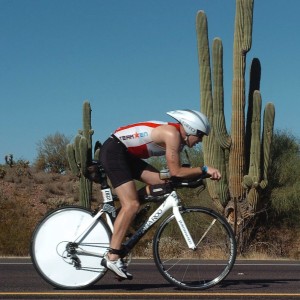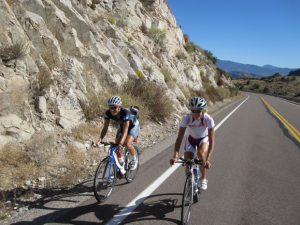It’s Not About the Gain
It’s common for Ironman® athletes to “shop a bike course,” searching out information on the relative difficulty of bike courses and usually focusing on the total elevation gain. However, in our experience, elevation gain doesn’t tell the complete story about the relative difficulty of Ironman® bike courses. Rather, the primary consideration should be how easy or difficult the bike course is to “figure out?”
That is:
-
Does the bike course force you to make big or small decisions very frequently?
-
Once a decision is made, how long is that course of action / inaction applied?
Why is “decision frequency and length” so important?
140.6 miles is too long of a problem to solve with fitness alone. Rather, success at the Ironman® distance is about the application of your fitness to the course via excellent race execution skills. On race day you put this fitness and your race execution skills in a box, drive that box around the course, and make decisions all day.
The contents of this Race Execution Skills Box are:
-
Self-Awareness: are you able to monitor systems, and observe yourself and situations objectively, identifying when you need to make a decision?
-
Knowledge: do you know how to make effectively decisions? To race with power? Pace? Heart rate? How to adjust those for heat, wind, rain, or nutritional surprises? Fuel and hydrate yourself effectively? Fix a flat very quickly? Pace the first few miles of the Ironman® bike and run, and much, much more?
-
Patience: the ability to play the long game, ignoring the short term game played by those around you.
-
Discipline: very simply, the ability to shut up, sit down, and do what you know you should do.
The Ironman® bike course will present you with several types of decisions to make on race day. Below are our notes for each:
Heat: you’re used to seeing a heart rate of X, power of Y, and Rate of Perceived Exertion (RPE) of Z in the temps you’ve seen in training at your goal Ironman® effort. That effort has an associated nutrition and hydration plan. But on race day it’s much hotter. You must make an adjustment to that plan, deciding on a course of action and then executing that action. So while the frequency of that decision is very low, the length of time across which you apply that decision is very long, all day. Smart, disciplined athletes with opportunities to adapt to the heat want hot races because they will make good choices while their competition makes poor choices.
Wind: whether you’re confronted with a head, tail, or crosswind, you need to make an adjustment to your pacing plan. Or do you? Actually, you don’t, and shouldn’t, and here’s why:
-
Unlike a climb, which usually only lasts for a few minutes, if you give it more gas into a headwind, or come of the gas into a tailwind, you will apply that decision for many, many minutes depending on the orientation of the course and the wind direction. For this reason…
-
Some Ironman® courses are more wind-dangerous, not because they are necessarily very windy but because you are going in one direction for miles and miles. So if you’ve made the decision to work a little harder than you should into the wind, you’re now working a little too hard for miles and miles. Not good!
Long Climbs: these may appear to be particularly dangerous but they’re not. Why? Because they are relatively easy to identify and figure out. That is, it’s relatively easy to understand that when you make the left in Wilmington and start riding back into Lake Placid, you’ll be mostly climbing for 45 to 60 minutes. Sure, there are some grade changes in that stretch and it’s not a grinding climb, but most patient, disciplined, smart athletes can wrap their heads around the fact that they’ll be going mostly up for the better part of an hour and that they should just chill.
Short Climbs: these are the killers of Ironman® run splits. Why? Because short, steep hills force you to make many, many decisions. It’s very easy to make wrong decisions — too much power — on these hills, and they are short enough that your heart rate probably never rises to a level that’s a true reflection of your effort.
In Summary
-
Race day is about execution, not fitness.
-
You put your head in a Box and drive that Box around the course. The contents of your Race Execution Box are:
-
Self-Awareness
-
Knowledge
-
Patience
-
Discipline
-
-
The course then presents you with variables and requirements to make a decision.
-
The frequency of these decisions, and the length of their consequences, are the true measures of an Ironman® bike courses difficulty, not the total elevation gain!
-
Lots of decisions + good Box = potential for a good day.
-
Lots of decisions + poor Box = likelihood for a bad day.
-
Additional Resources
Interested in our assessment of every US Ironman® course according to the criteria outlined above?
Go here to listen to the accompanying podcast by Rich Strauss.
Interested in learning more about YOUR Ironman® course?
Check out our complete breakdowns of the Ironman® Texas and Coeur d’Alene courses and be sure to subscribe to our weekly updates as we continue this “Ironman® Breakdown” series across the summer.





eugene partridge
NICE ARTILE
THANKS